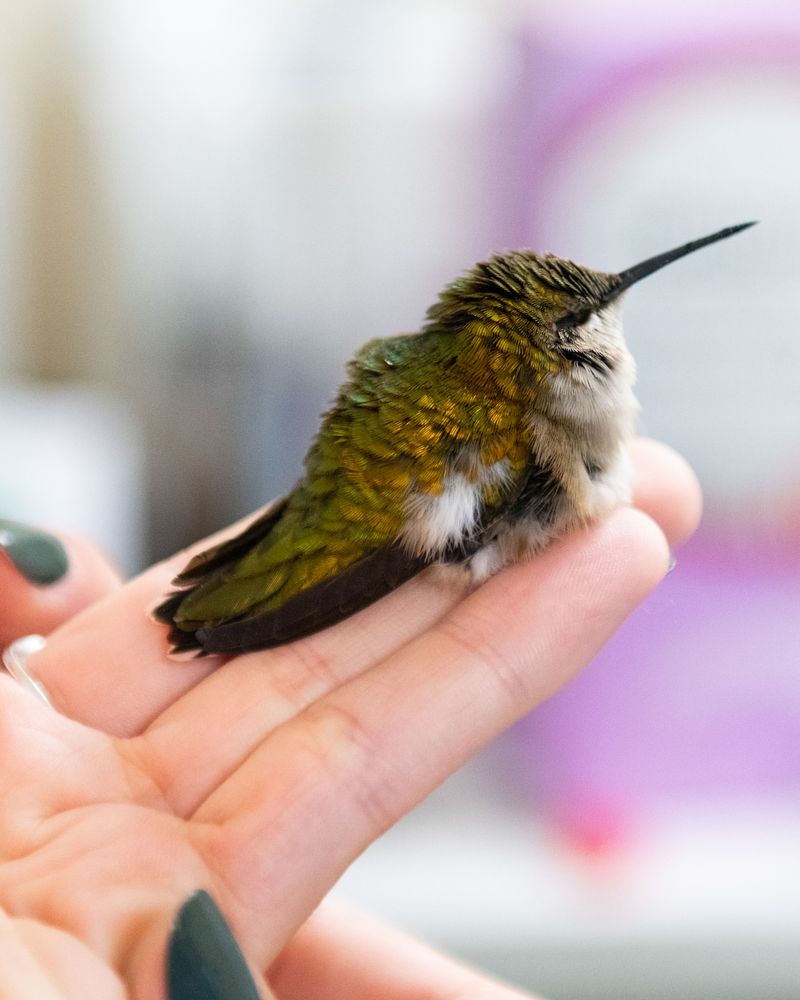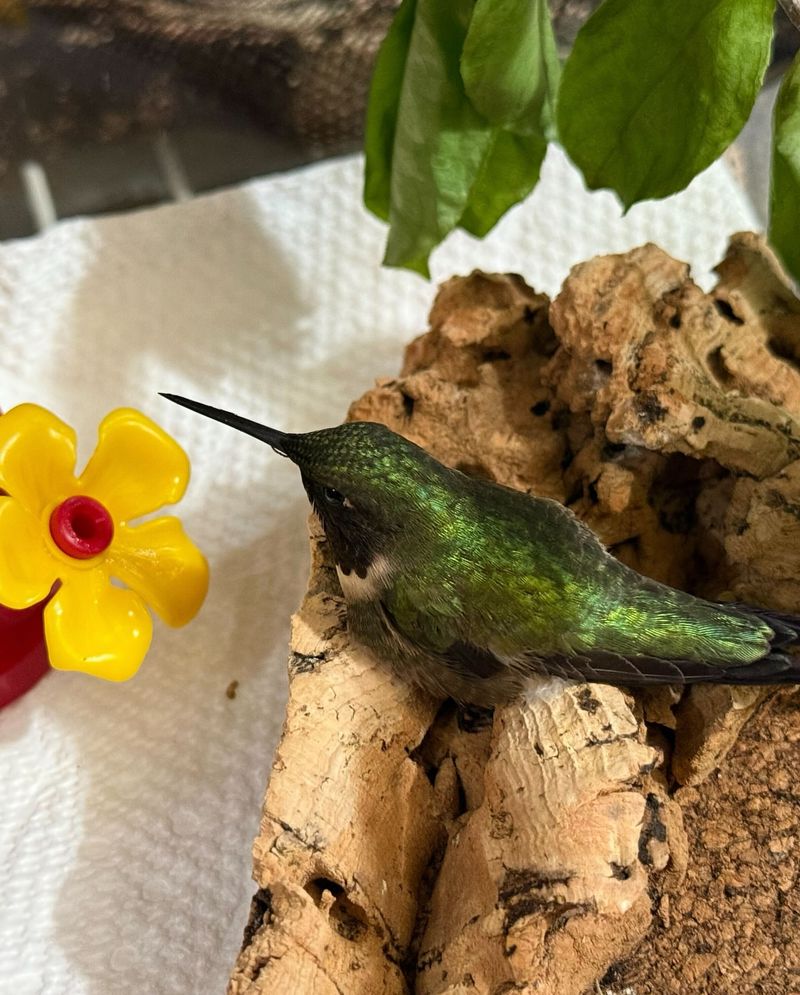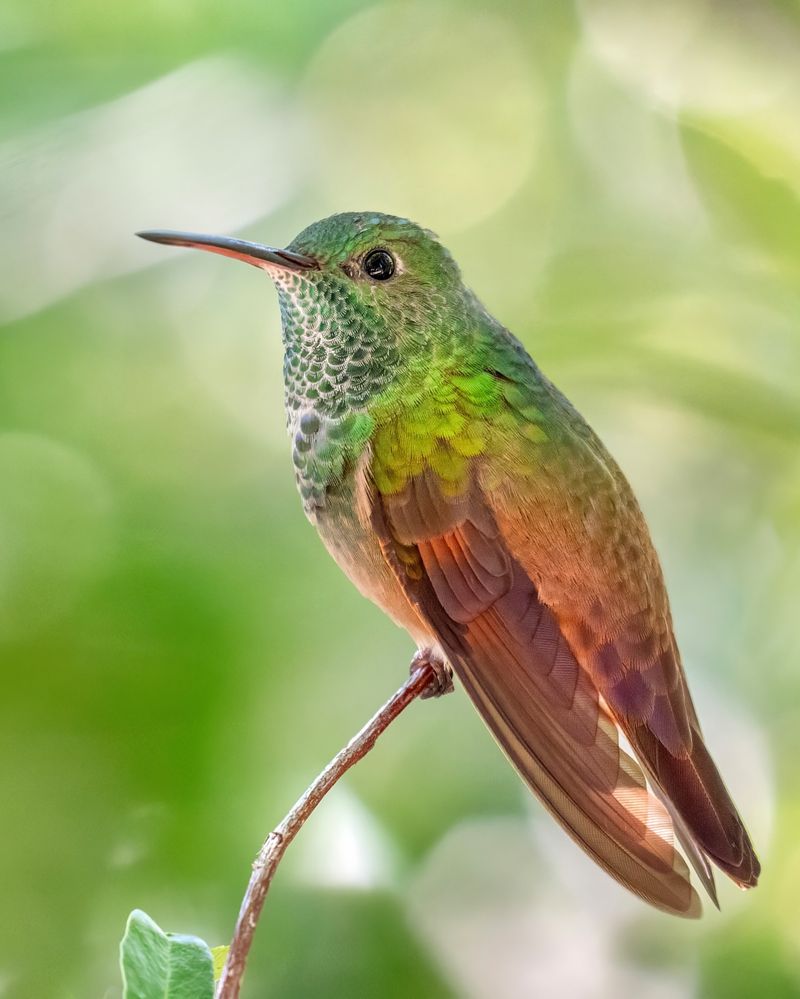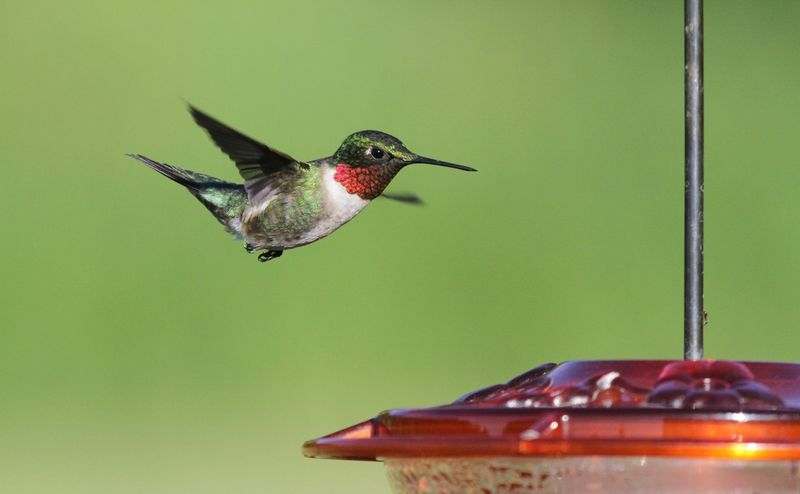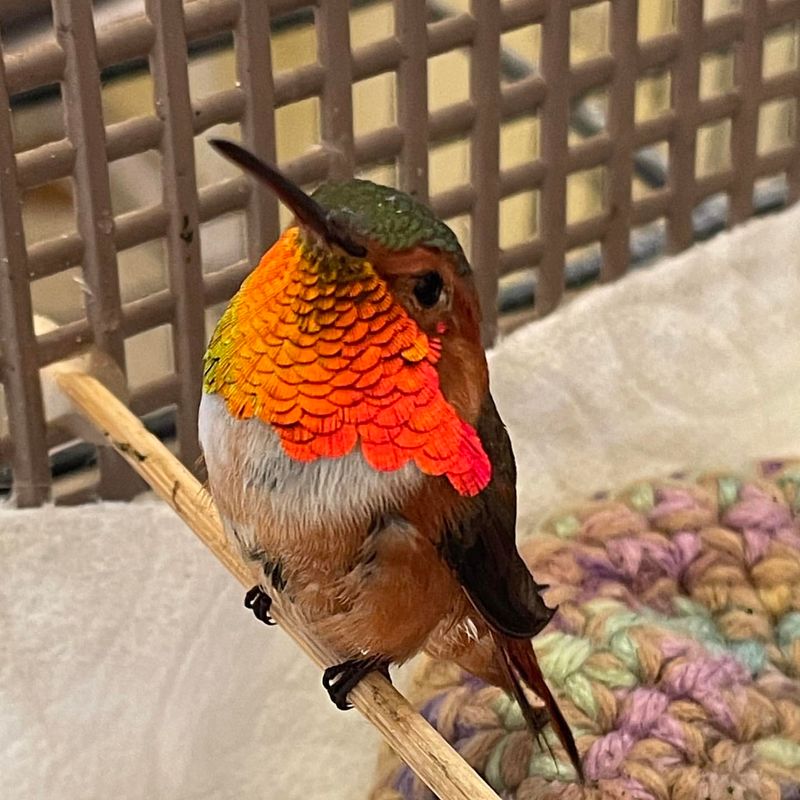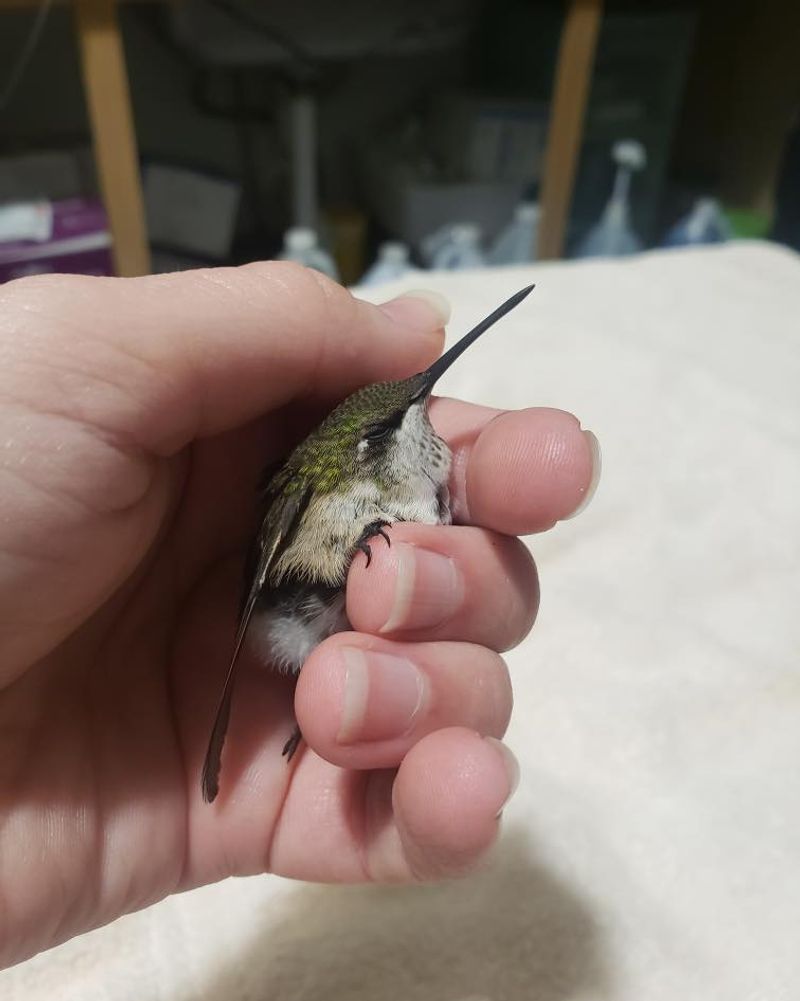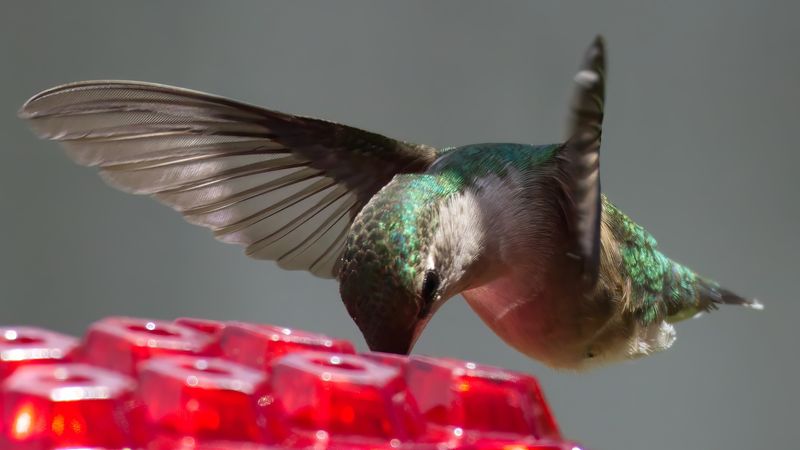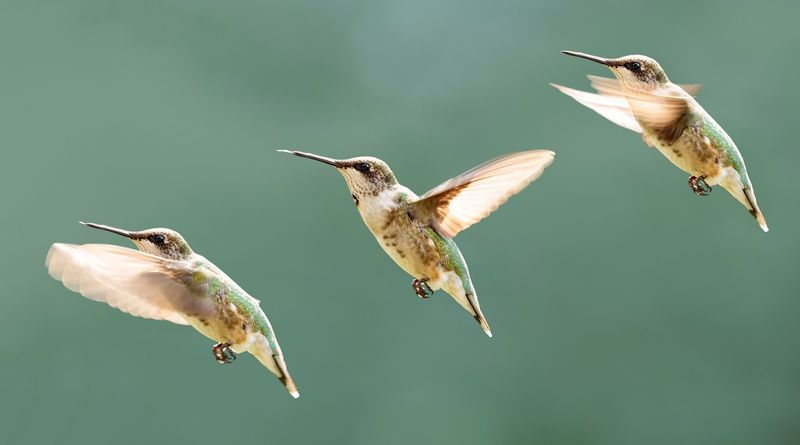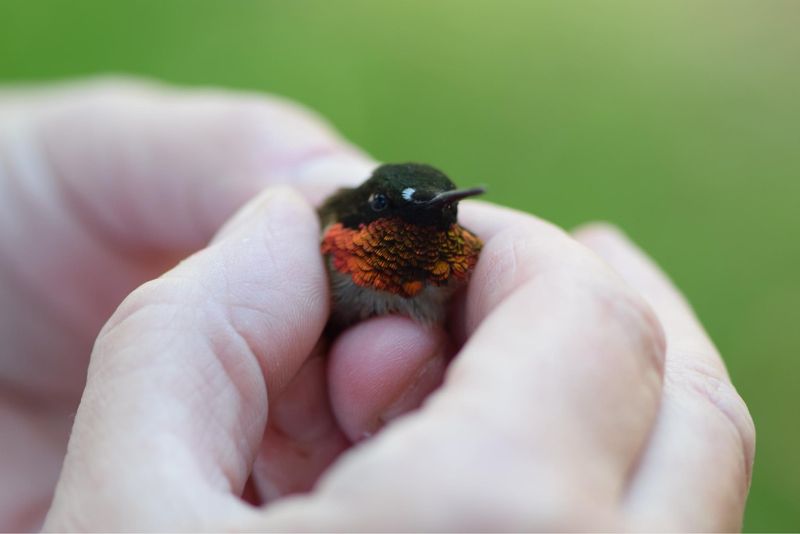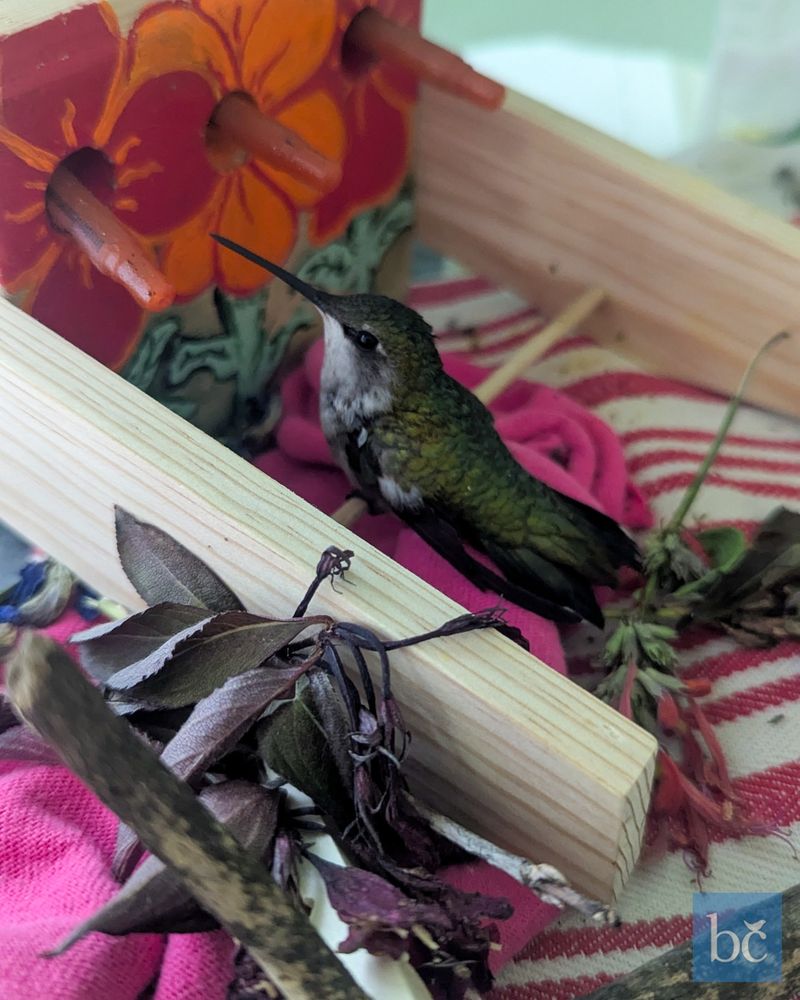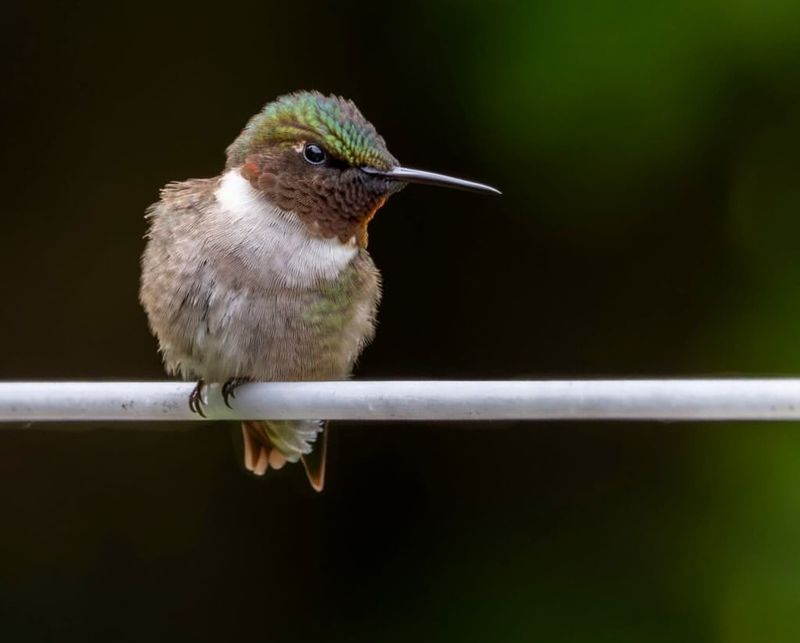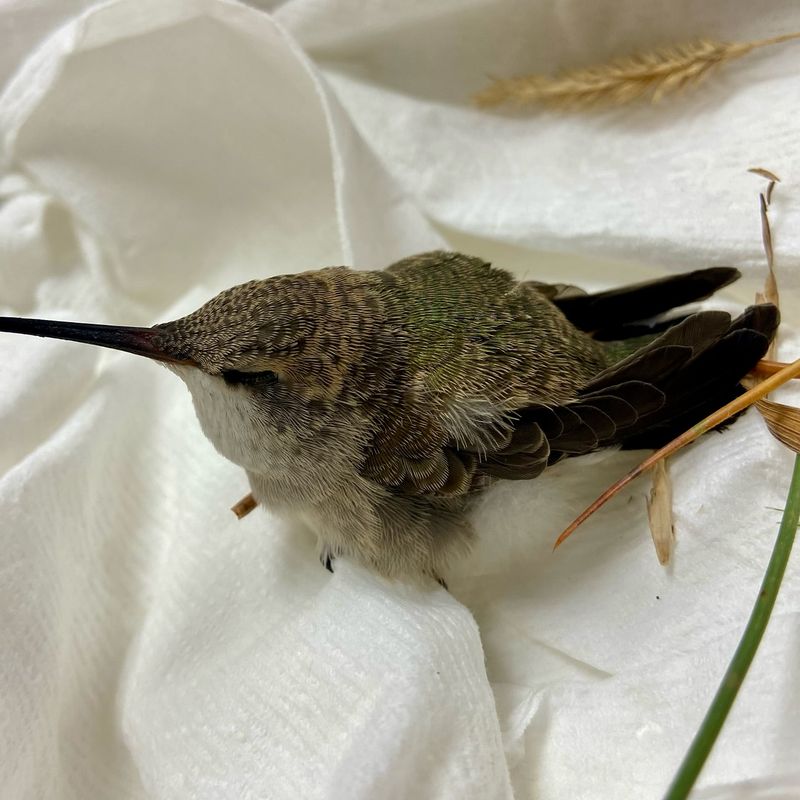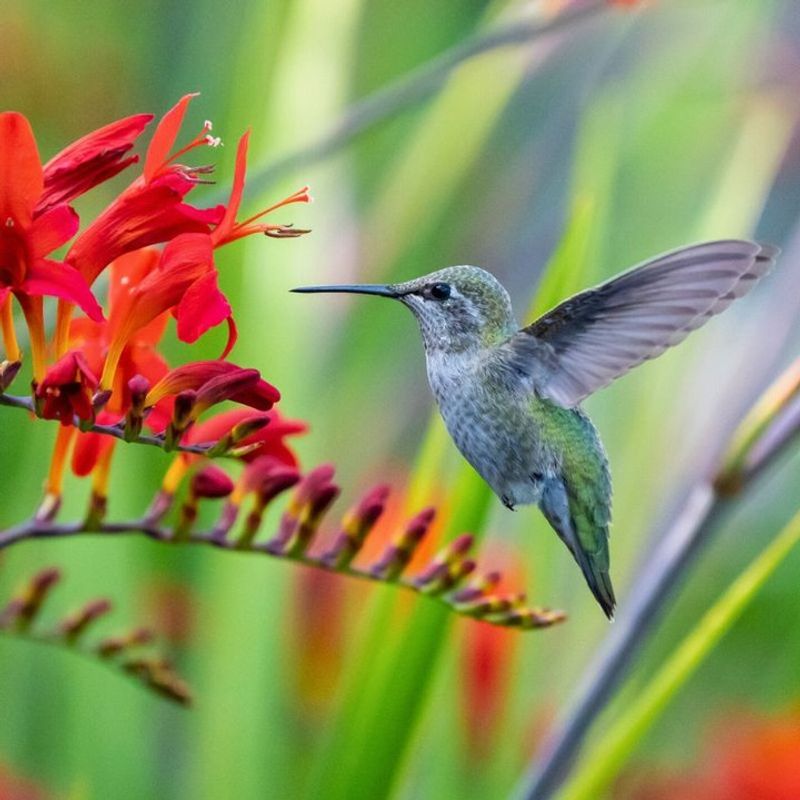Spotting a grounded hummingbird fluttering helplessly in the garden tugs at the heart—but good intentions can go sideways fast. From feeding flubs to risky rescues, even seasoned Florida gardeners can unknowingly make missteps that do more harm than good.
Knowing what not to do is the first step toward truly helping these delicate birds when they’re down. Avoid the common pitfalls and give your winged visitor the best shot at recovery.
1. Offering Regular Sugar Water
Many well-meaning gardeners grab whatever sugar is in the pantry. Plain white table sugar mixed with water in a 1:4 ratio is the only safe option.
Brown sugar, honey, artificial sweeteners, or fruit juices can cause fatal fungal infections in a hummingbird’s tongue. These alternatives lack proper nutrition and can ferment quickly in Florida’s heat, creating toxic compounds for these tiny birds.
2. Handling With Bare Hands
Touching a grounded hummingbird directly transfers oils and bacteria from your skin. Their feathers are incredibly sensitive, and human touch can damage their natural waterproofing.
Always use clean cloth gloves or a soft cloth to gently scoop them up. Your body heat can also stress these tiny creatures, whose hearts beat up to 1,260 times per minute. Minimal handling reduces their anxiety during an already stressful situation.
3. Waiting Too Long To Act
Florida gardeners sometimes monitor a grounded hummingbird for hours, hoping it will recover on its own. With metabolisms that burn energy incredibly fast, these birds can starve within 3-5 hours.
Time is truly life-or-death for them! A hummingbird on the ground for even 30 minutes needs immediate intervention. Their tiny bodies lose heat rapidly, and they quickly become too weak to recover without help.
4. Placing Birds In Cardboard Boxes
Cardboard seems safe, but these boxes have rough edges that can damage delicate feathers. Plus, Florida’s humidity makes cardboard break down quickly, potentially releasing harmful particles.
A better temporary home is a small pet carrier lined with soft, clean cloth. Or use a ventilated plastic container with air holes and a secure lid. The smooth sides prevent wing damage while the bird recovers from exhaustion or mild injury.
5. Forcing Food Or Water
Panicked gardeners sometimes try to feed a dropper directly into a hummingbird’s beak. This well-intended action can drown these tiny birds or cause pneumonia if liquid enters their lungs.
Instead, place a small bottle cap filled with sugar water near the bird. Their long tongues can lap up liquid safely at their own pace. Never squirt liquid directly into their mouths – their specialized feeding mechanism works through capillary action, not suction.
6. Keeping Birds Near Air Conditioning
Florida gardeners often bring hummingbirds inside to their cool, air-conditioned homes. This sudden temperature change can send these tiny birds into shock.
Hummingbirds need consistent warmth around 75-85°F. A better approach is creating a recovery space in a garage or Florida room with stable temperatures. Use a heating pad set on low beneath half of their container, allowing them to move to cooler areas if needed.
7. Missing Window Collisions
Many grounded hummingbirds in Florida gardens have actually struck windows. Gardeners often miss the real cause of injury, focusing only on providing food and water.
Check for subtle signs like one wing held slightly differently or tiny feathers stuck to nearby windows. Window collisions cause concussions that require specific care. Applying window decals or hanging sun catchers can prevent future accidents once the bird recovers.
8. Releasing Too Quickly
The excitement of seeing a hummingbird perk up leads many Florida gardeners to release them immediately. This premature freedom often results in the bird becoming grounded again within hours.
A recovered hummingbird should be actively trying to fly in its container and showing bright, alert eyes. Proper release should happen in the morning, giving the bird full daylight hours to find food. Never release in evening hours when predators are active.
9. Forgetting About Predators
A grounded hummingbird in a Florida garden is incredibly vulnerable. Neighborhood cats, snakes, and even larger birds see these tiny creatures as easy prey.
While providing care, always place the bird’s container in a secure, elevated location away from windows where predators might spot movement. Cover part of the container with a light cloth to reduce stress while still allowing airflow. This simple step prevents trauma from predator sightings.
10. Using Commercial Hummingbird Nectar
The red-dyed commercial nectar products sold in garden centers contain preservatives and artificial colors. These chemicals can damage a stressed hummingbird’s delicate digestive system.
Pure white sugar dissolved in water mimics natural flower nectar perfectly. The 1:4 ratio (1 part sugar to 4 parts water) matches the sugar concentration in natural flowers these birds evolved to feed from. Save those commercial products for your regular feeders, not emergency care.
11. Overlooking Dehydration Signs
Florida’s heat makes dehydration a primary concern for grounded hummingbirds. Many gardeners miss the subtle signs: wrinkled or dull-looking feet, sunken eyes, and flaky beaks.
These tiny birds need both energy and hydration. During initial care, offer slightly more diluted sugar water (1:5 ratio) before transitioning to the standard mixture. Misting the air around them with room-temperature water can help rehydrate without stressing their systems.
12. Attempting Home Medical Treatment
Finding ointments, tweezers, or bandages to help an injured hummingbird can cause more harm than good. Their bones are hollow and extremely fragile – thinner than toothpicks!
Instead of playing doctor, focus on providing a quiet, warm, dark environment while contacting a wildlife rehabilitator. Florida has several specialized bird rehabilitation centers. Save their contact information before emergencies happen, as every minute counts with these high-metabolism birds.
13. Keeping Them In Bright Light
Many Florida gardeners place recovery containers in sunny windows, thinking the birds need bright light. This actually creates stress for these tiny patients and can raise temperatures to dangerous levels.
A quiet, semi-dark environment helps calm a hummingbird’s racing heart. Think of how you’d treat a migraine – soft light and minimal disturbance. Position their recovery container in a room with indirect natural light, away from direct sun that can quickly overheat their tiny bodies.
14. Confusing Juveniles With Injured Adults
Young hummingbirds learning to fly often end up on the ground in Florida gardens. Their shorter beaks and slightly fuzzy heads distinguish them from injured adults.
Fledgling hummingbirds practice flying for days before becoming proficient. If you find a juvenile with no visible injuries, place it on a low branch near where it was found. Watch from a distance – the parents are likely nearby and will continue feeding it.
15. Using Pesticides Near Recovery Areas
Florida gardens often face pest pressures, but chemical pesticides can be deadly to recovering hummingbirds. Their rapid breathing and high metabolism make them extremely sensitive to airborne toxins.
Create a pesticide-free zone extending at least 20 feet around any area where you’re caring for a grounded hummingbird. Even organic sprays can irritate their delicate respiratory systems. Remember that these tiny birds can detect chemical traces that humans cannot perceive.
16. Failing To Create Follow-Up Support
After releasing a recovered hummingbird, many Florida gardeners assume their job is done. Without follow-up support, the bird may struggle to regain full strength.
Maintain clean sugar-water feeders near the release site for at least two weeks. Plant native nectar flowers like firebush, coral honeysuckle, and salvia to provide natural food sources. Creating a hummingbird-friendly garden helps not only your rescued bird but supports the entire local population.




